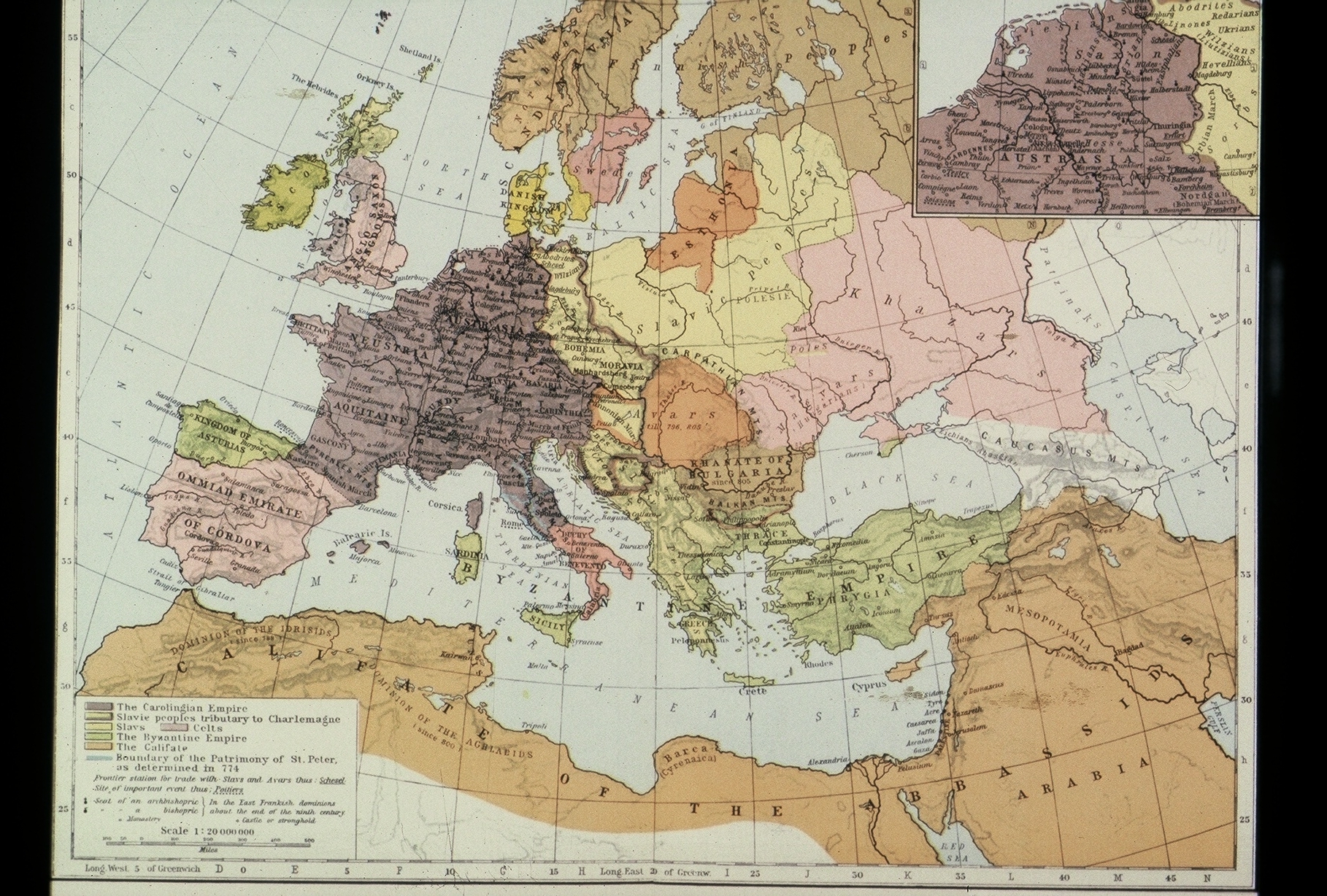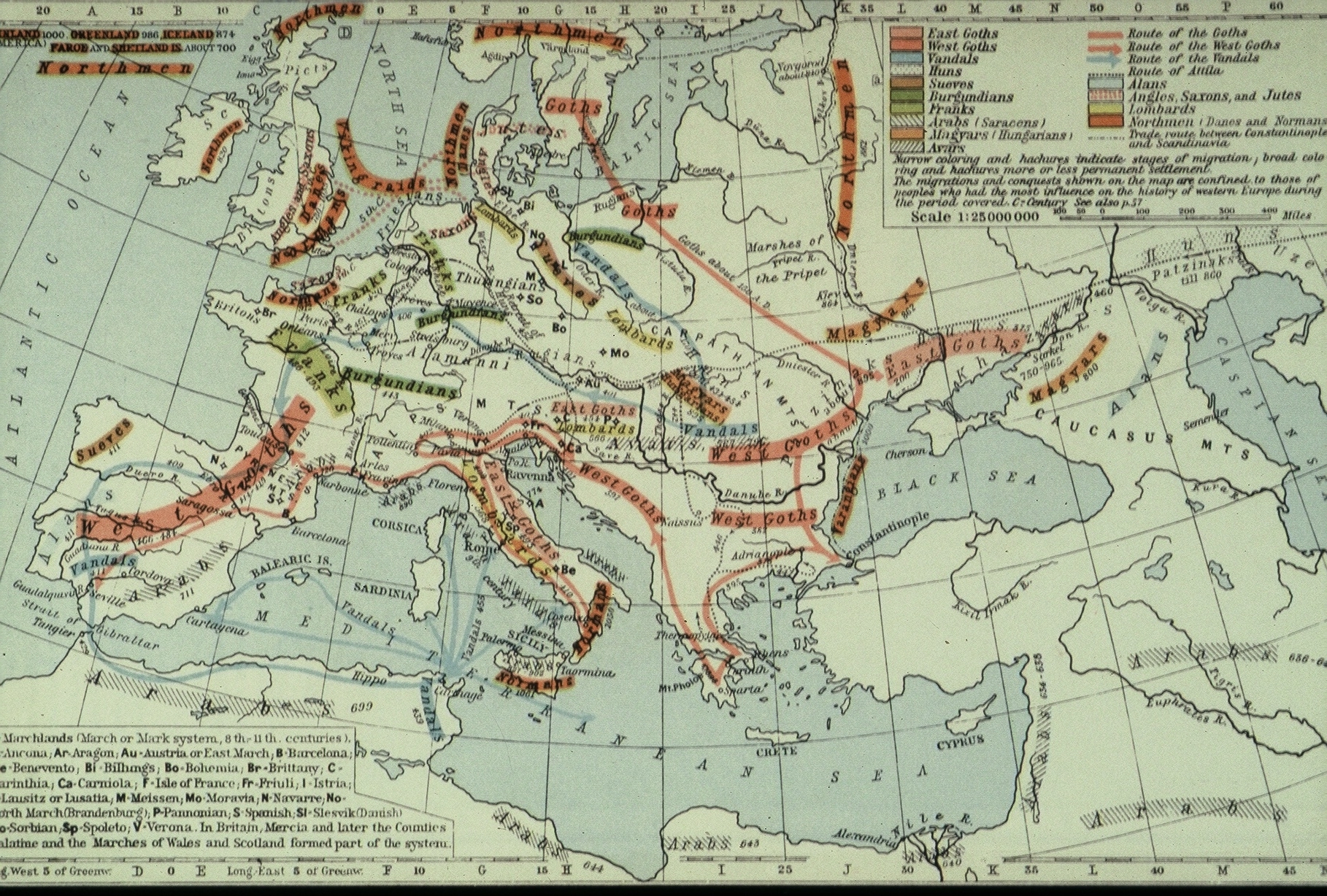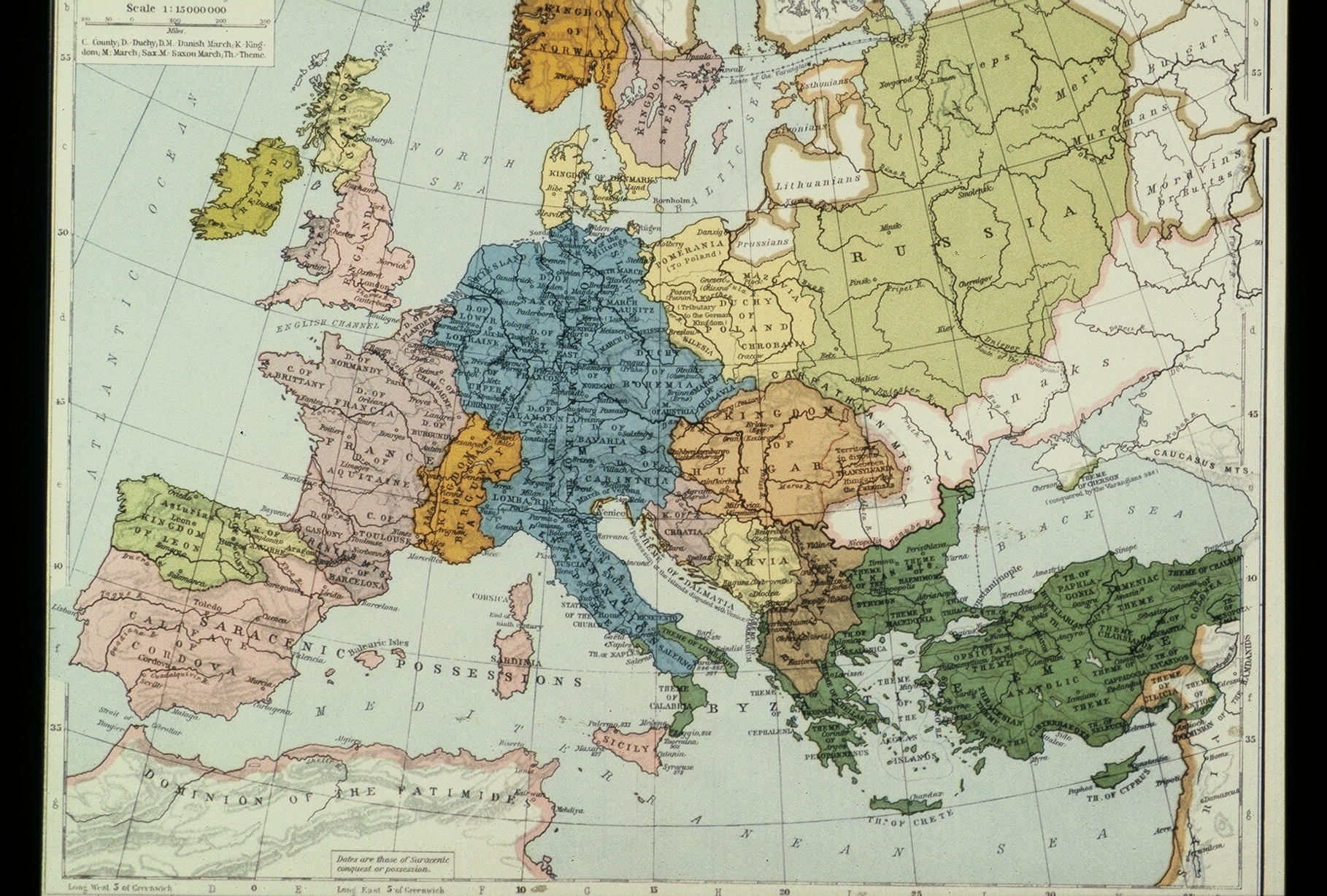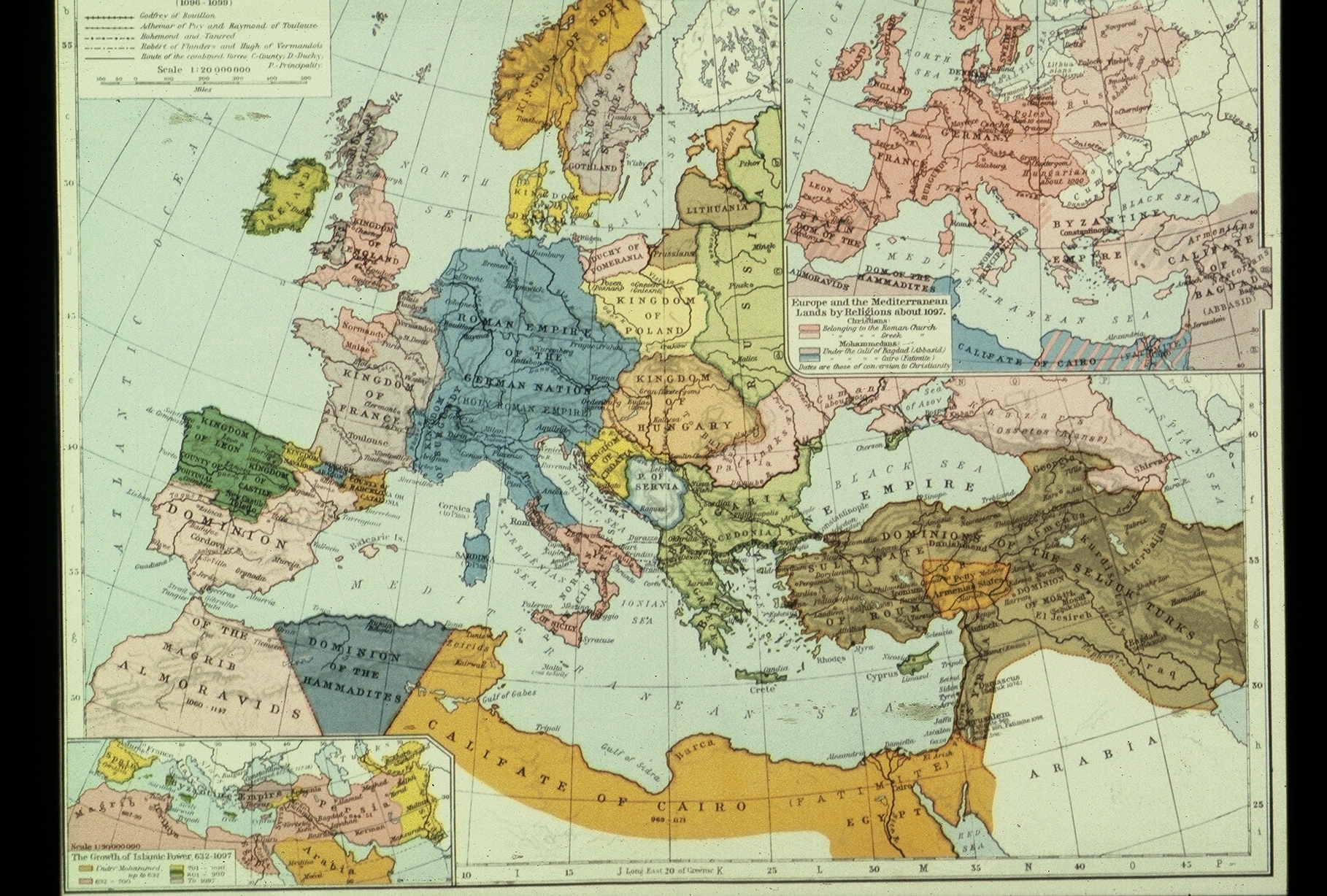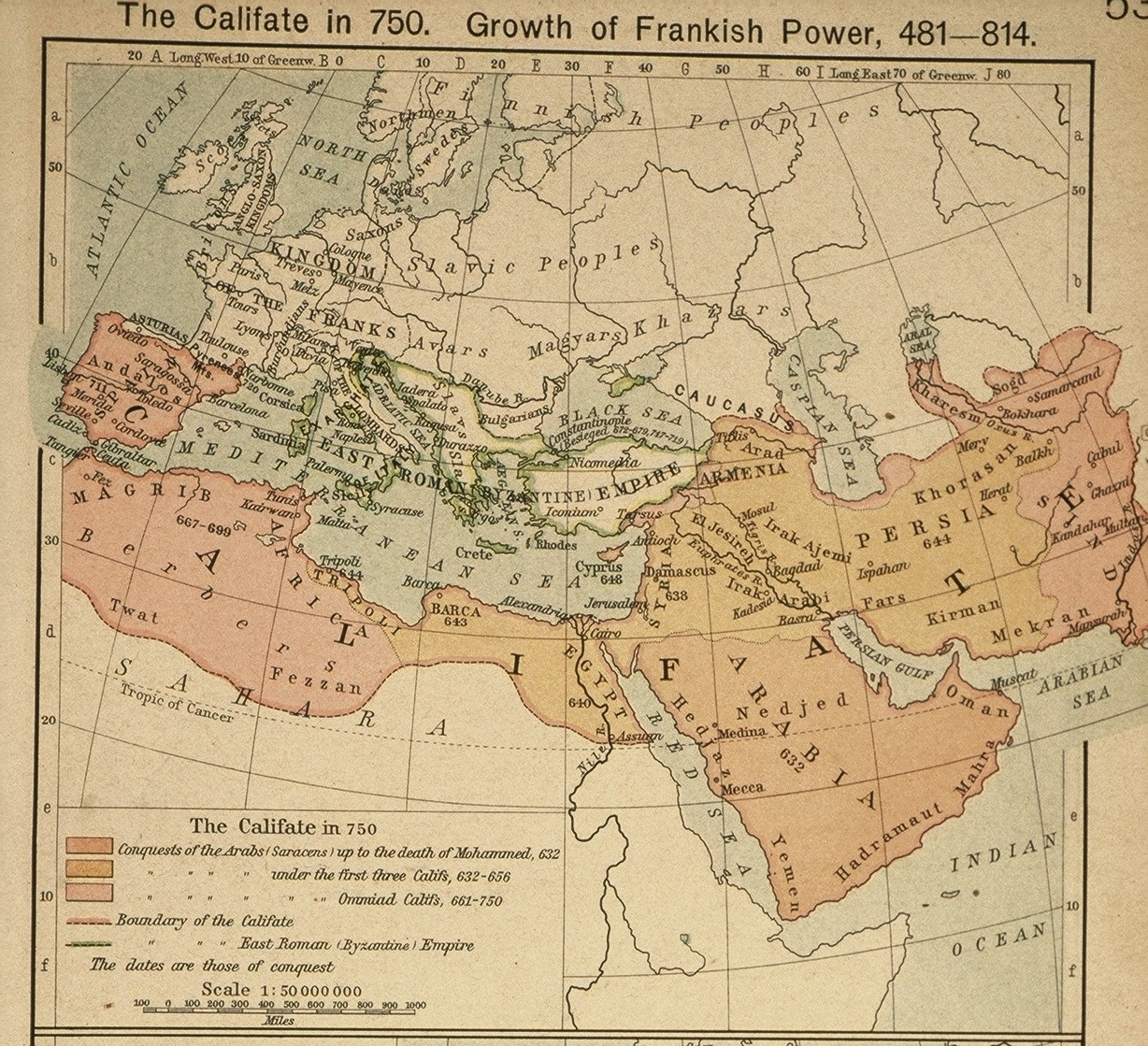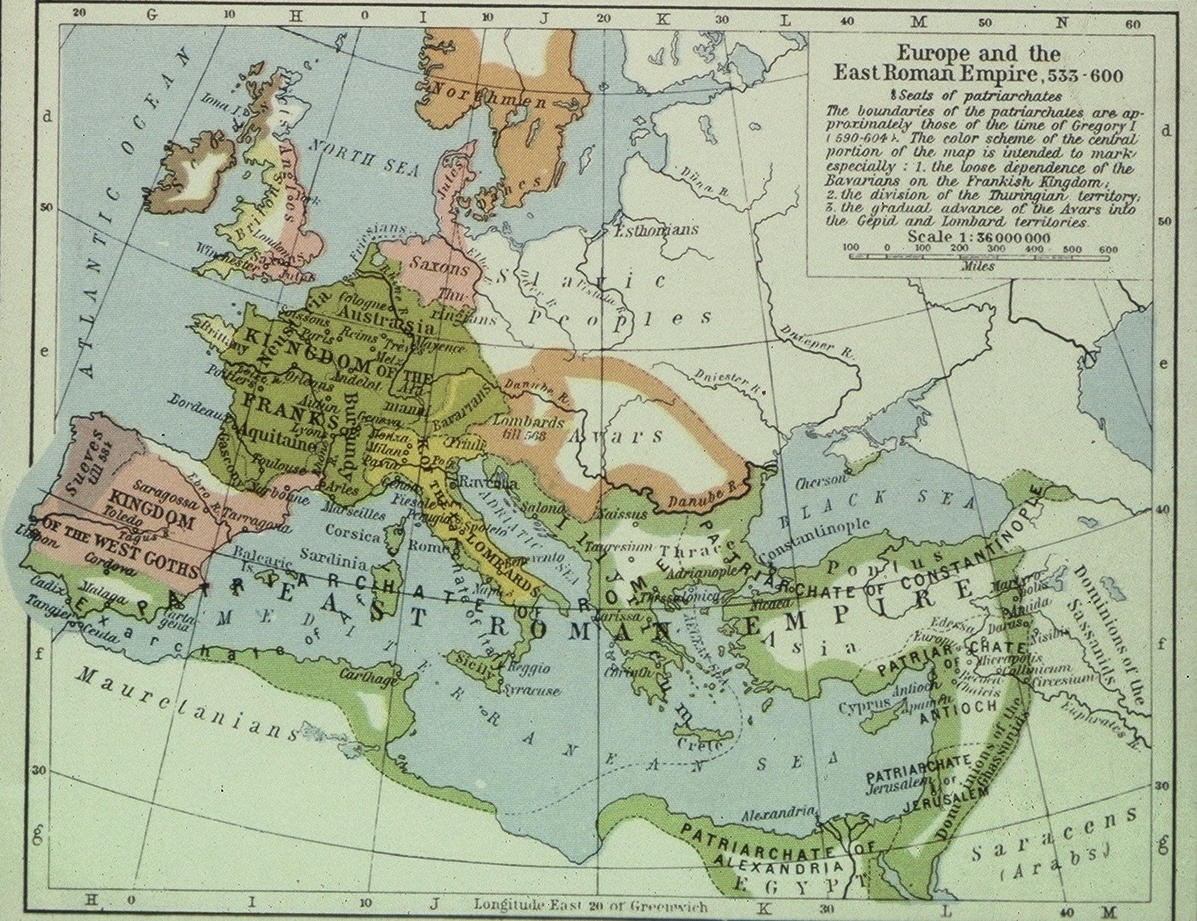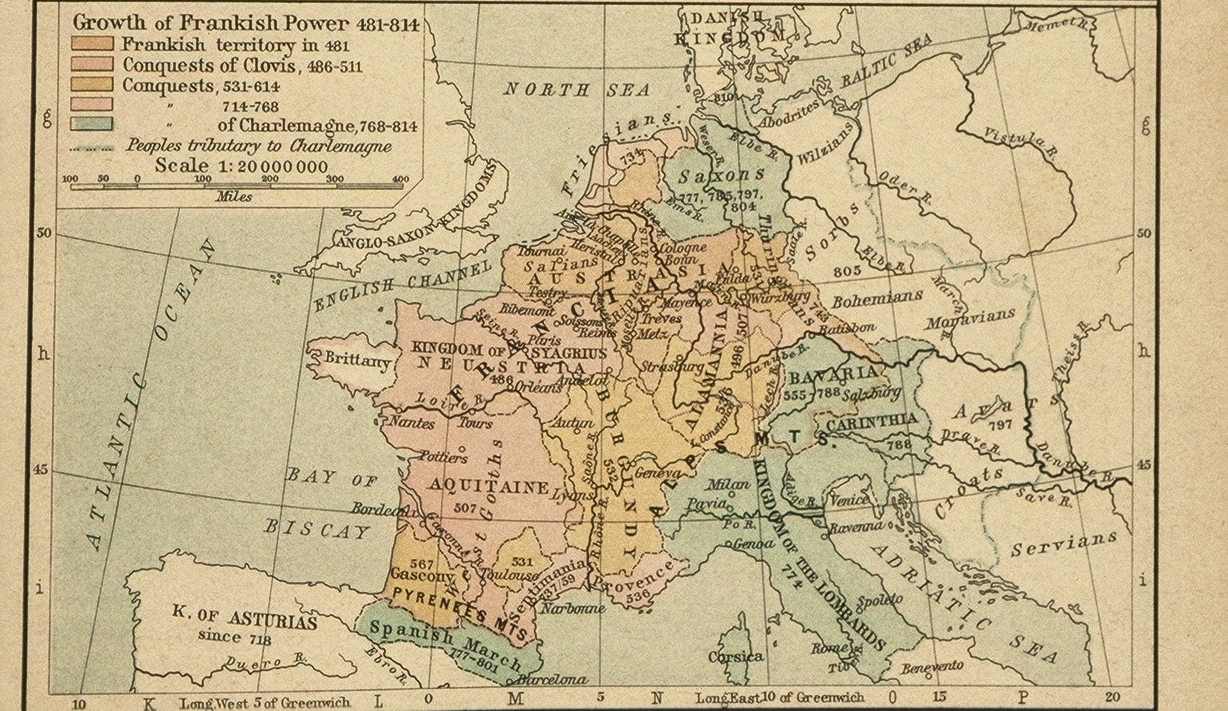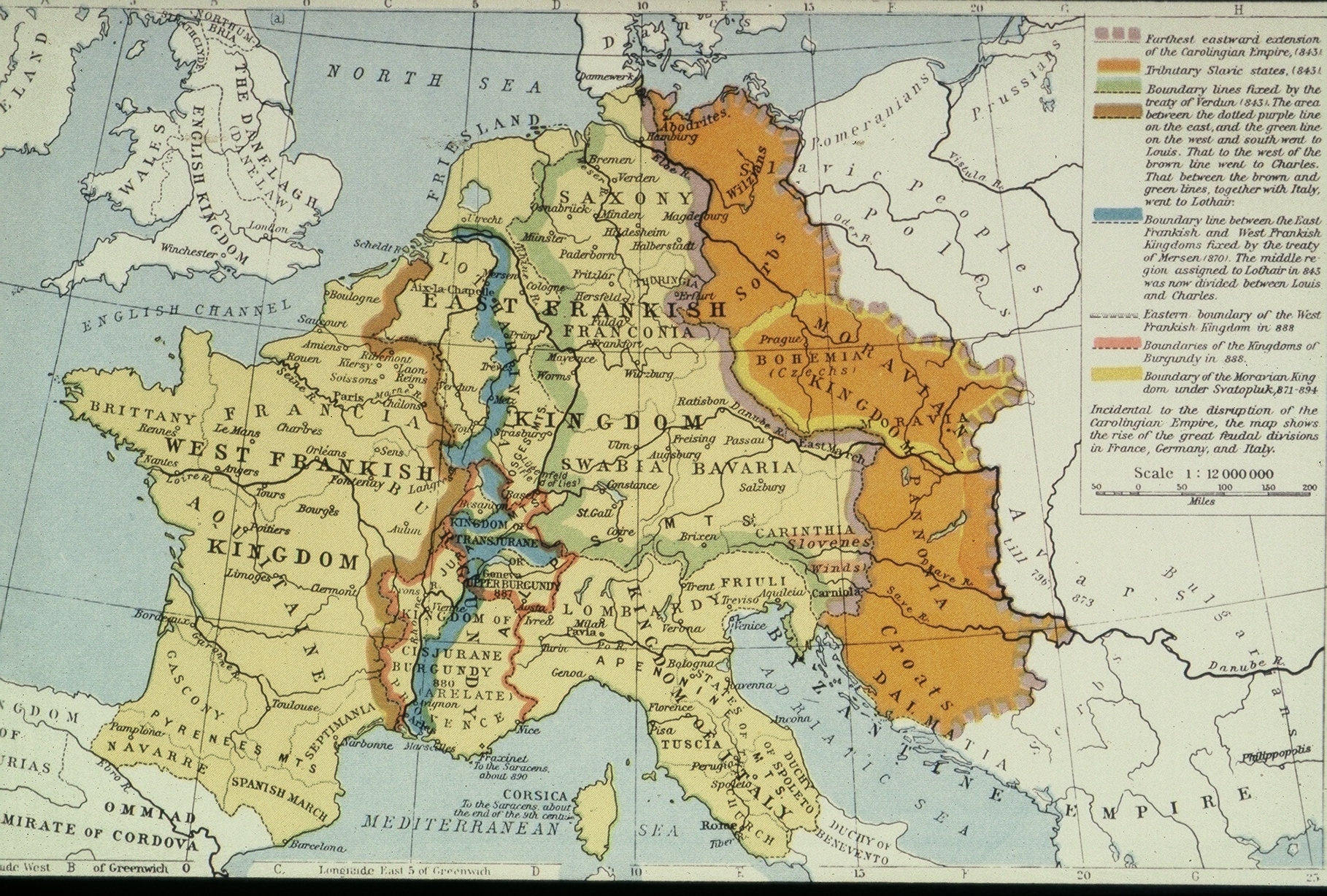Feudalism
- Feudalism is topic of hot controversy.
- The Problem of Definition—the Social View
- A type of economy, built around the manor, in the model, though not always in reality, the manor is coextensive with the vill, with open fields, lord, priest, free tenants, serfs and a lord’s court to manage the whole.
- A type of society characterized by multiple relationships of dependency, lord and man (vassal), with mutual obligations of support, particularly military, summed up in the ceremonies of homage and fealty.
- The Problem of Definition—the governmental-legal view
- Feudalism is a pyramidal structure of governance, based on landholding in which the king rules his tenants-in-chief, they their vassals down to the peasant. Every man owes suit in his lord’s court, only the tenants in chief owe it in the king’s.
- Feudalism is a pyramidal system of land holding whereby all land is holden of the king for service usually knight’s service and the tenants in chief parcel out the land to subtenants for service, knights and other things: knight’s service, serjeanty, socage, frankalmoign and incidents, suit of court, aid, wardship, marriage, relief, primer seisin, escheat.
- The broader social/economic pattern is present in all the major w. European countries in the M.A., but it may well have been there before the break-up of the Carolingian empire. The legal/governmental definition of feudalism is another story.
- I can’t give you a law-book about feudalism. I can give you law-books that show plenty of feudal institutions. There is a book called the libri feudorum. It’s a glossators’ book from 12th century Italy. It’s late for our purposes, and it comes from a time when feudal institutions were already competing with other types of institutions for legal recognition. There’s a collection of documents in Section IV of the Materials that may help.
- The earliest elements: From both Merovingian and Carolingian times we have various documents that describe men becoming subordinate to other men.
- [Doc. A: the antrustio c. 650]: [Elements: (1) arms, (2) aid and protection, including a special wergeld, no land, (3) ceremony of homage described.] “It is right that those who have promised us unbroken faith should be rewarded by our aid and protection. Now since our faithful subject ___ with the will of God has come to our palace with his arms and has there sworn in our hands to keep his trust and fidelity to us, therefore we decree and command by the present writing that henceforth the said is to be numbered among our antrustiones. If anyone shall presume to slay him, let him know that he shall have to pay 600 solidi as a wergeld for him.”
- [Doc. D—commendation c. 750.] “To my great lord, ___, I, ___. Since, as was well known, I had not wherewith to feed and clothe myself, I came to you and told you my wish, to commend myself to you and to put myself under your protection. I have now done so, on the condition that you shall supply me with food and clothing as far as I shall merit by my services, and that as long as I live I shall perform such services for you as are becoming to a freeman, and shall never have the right to withdraw from your power and protection, but shall remain under them all the days of my life. It is agreed that if either of us shall try to break this compact he shall pay ___ solidi, and the compact shall still hold. It is also agreed that two copies of this letter shall be made and signed by us, which also has been done.”
- [Doc. I rules about vassals leaving the service of their lords (816, 847)] “If anyone shall wish to leave his lord and is able to prove against him one of these crimes, that is, in the first place, if the lord has wished to reduce him unjustly into servitude; in the second place, if he has taken counsel against his life; in the third place if the lord has committed adultery with the wife of his vassal, in the fourth place if has willfully attacked him with a drawn sword; in the fifth place, if the lord has been able to bring defense to his vassal after he commended his hands to him, and has not done so; it is allowed to the vassal to leave him. If the lord has perpetrated anything against the vassal in these five points it is allowed the vassal to leave him.”
- The next step in the process is hard to discern, particularly from the documents that we have. It was assumed in the theories of feudalism of the previous generation, but many of the elements are speculative, and it is on this speculation that recent challenges to the whole notion of feudalism have been based. The traditional story goes like this:
- Lords set up their vassals on land to supply them with their needs in return for services.
- The invention of the knight. Stirrups and Charles Martel (Tours/Poitiers, 732/3).
- These men had to be supported somehow and the church had a lot of land. (One can buy this step without the controversial element of the knight, which may well be later.)
- To hand was the legal idea of precarium and benefice [(Doc. B) (650)] which was probably used for things other than gifts to the church: “I, ___, and my wife, ___, in the name of the Lord, give by this letter of gift, and transfer from our ownership to the ownership and authority of the monastery of ___, over which the venerable abbot ___ presides, and which was founded in the honor of ___ by ___ in the county of ___, the following villas situated in the county of ___, with all the lands, houses, buildings, tenants, slaves, vineyards, woods, fields, pastures, meadows, streams and all other belongings and dependencies, and all things movable and immovable which are found in the said villas now or may be added later; in order that under the protection of Christ they may be used for the support and maintenance of the monks who dwell in the aforesaid monastery. We do this on condition that as long as either of us shall live we may possess the aforesaid villas, without prejudice to the ownership of the monastery and without diminution of the value of them, except that we shall be allowed to emancipate any of the slaves that dwell on the lands for the salvation of our souls. After the death of both of us, the aforesaid villas with any additions of improvements which have been made, shall return immediately to the possession of the said monastery and the said abbot and his successors, without taking any judicial process or obtaining the consent of the heirs.”
- The result is [Doc. E (743)] the grant of land to support the vassal, but the grant is not regarded as permanent. “Also we have established, with the advice of our clergy and the Christian people, that because of threats of war and the invasions of some of the border tribes, we shall in the future, God consenting, take possession of a part of the land belonging to the Church, on precarial tenure and with a fixed rent, for the support of our army and on these conditions. From each appropriated estate one shilling, that is twelve pence, shall be paid annually to the church or monastery. But if the person granted the property should die, the Church shall recover its own property unless, necessity requiring it, the ruler should command the precaria be renewed and written again. Let care be taken in each case that no church or monastery whose land has been granted in precaria should thus suffer poverty or want. If poverty demands it, then let the whole possession be returned to the church or house of God.”
- The family came to the fore; vasssals came to view benefices as their own. [Doc. F (Charlemagne 806)] “We have heard that counts and other men who hold benefices from us have improved their own property at the expense of the benefices, and have made the serfs on the benefices labor on their own land, so that our benefices are waste and those dwelling on them in many places suffer great evils. We have heard that some sell the benefices which they hold from us to other men in full ownership, and then, having received the price in the public court, they buy back the lands as allodial lands. This must not be done, for those who do this break the faith which they promised us.” By the 9th c. [(Doc. J, 875)] in some areas the benefice seems to be inheritable, at least under some circumstances. “If a count whose son accompanies us shall die during our absence, our son with the advice of our faithful subjects shall appoint one of the near relatives of the deceased count to govern the county with the aid of the officials of the county and the bishop in whose diocese it is, until we are notified of the case and have an opportunity to give the son of the count his father’s honors. But if the deceased count shall leave a minor son, that son shall govern the county with the aid of the officials and the bishop in whose diocese it is, until the death of the said count has been brought to our notice and we endow the son with his father’s honors. But if the count shall not leave a son, our son with the advice of our faithful subjects shall appoint someone to govern the county with the aid of the officials of the county; and the bishop, until our commands in respect to it are made known. And no one shall feel aggrieved, if we give the county to another than the one who governed it up to the time of our appointment. The same procedure shall be observed in regard to our vassals; and the bishops, abbots, and counts of our kingdom, and our other faithful subjects, shall do the same toward their men.” It was, as we have noted, probably not until the 11th century that it became firmly established in the Empire.
- Public functions become enmeshed in the process. [Doc. C (650)] From a very early time shows grants of immunity from jurisdiction were given to churches and monasteries. “We believe that our reign will best be rendered memorable, if we bestow suitable benefits on churches (or whatever you wish to insert here), with pious purpose, and if we secure these benefits under the protection of God by putting them in writing. Therefore, be it known to you that we have granted the request of that apostolic man, the bishop of ___, for the salvation of our souls, namely, that no public official may enter the lands which his church holds now, by our gift or by the gift of anyone else, or which his church may receive in the future, for the purpose of trying cases, or collecting taxes; but that the said bishop and his successors shall hold the said lands in the name of the Lord with full immunity. We decree therefore that neither you nor any of your subordinates or successors, nor any other public official shall presume to enter the lands of the said church for the purpose of trying cases, or collecting taxes or revenues, or receiving entertainment or seizing supplies or securities. All the taxes and other revenues which the royal treasury has a right to demand from the people on the lands of the said church, whether they be freemen or slaves, Romans or barbarians, we now bestow on the said church for our future salvation, to be used by the officials of the church forever for the best interests of the church.” That these could run with the land even if that land came into the hands of a layman is suggested by Doc. J (875), above. These public functions too could become inheritable. The honor, public office, was being treated like a benefice.
- The 9th century also gives us various pieces of evidence about bad lordship and overmighty royal officers. Doc. F (806, see above) concerns how difficult it is to get a royal official to treat his use of royal lands as not his own. Doc. G (805 X 829) contain, among other things, an interesting rule about witnesses (“Freemen who have no lands of their own, but live on the land of a lord, are not to be received as witnesses, because they hold land of another; but they are to be accepted as compurgators, because they are free. Those who have land of their own, and yet live on the land of a lord, are not to be rejected as witnesses because they live on the land of a lord but their testimony shall be accepted because they have land of their own.”), and much complaint about oppression (e.g., “Poor men complain that they are despoiled of their property, and they make this complaint equally against bishops and abbots and their agents, and against counts and their subordinates”). The fact is, however, that the emperor regards it as his job to do something about it.
- Doc. H (826 X 829) may be the most famous doc. from this period, a ninth-century survey of the estate of the great abbey of St. Germain near (now in) Paris. It shows us how a great lordship held it’s stuff together. Particularly interesting are the variations in status among the peasants (colonus, colona, slave, freed).
- Our evidence has dealt with the period before 900. The late 9th and early 10th centuries were a confusing time in Europe just as they were in England, and in many places for the same reason: the Vikings. If you follow the argument to this point you can see how the late 10th and early 11th centuries might have produced an intensification of what was already there. The pieces that had existed since the 9th century got put together in more and more places.
- As those that don’t like the concept of feudalism point out, our clearest evidence does not come until the 12th century. Both Docs. K2 and K3 date from this period. They clearly show the concepts of homage and fealty. They are both decidedly upper-class operations. In the case of both we may wonder about the underlying reality. K3 (1127): “Throughout the whole remaining part of the day those who had previously enfeoffed by the most pious count Charles did homage to the count, taking up now again their fiefs and offices and whatever they had before rightfully and legitimately obtained. On Thursday the seventh of April homages were again made to the count being completed in the following order of faith and security. First they did their homage thus, the count asked if he was willing to become completely his man, and the other replied, ‘I am willing’; and with clasped hands, surrounded by the hands of the count, they were bound together by a kiss. Secondly, he who had done homage gave his fealty to the representative of the count in these words, ‘I promise on my faith that I will in future be faithful to count William and will observe my homage to him completely against all persons in good faith and without deceit,’ and thirdly he took his oath to this upon the relics of the saints. Afterward, with a little rod which the count held in his hand, he gave investitures to all who by this agreement had given their security and homage and accompanying oath.”
- A century earlier (doc. K1) this famous letter of Fulbert of Chartres made it into the libri feudorum. We haven’t time to analyze the rhetoric in full but we should point out that Fulbert emphasizes the reciprocal nature of the obligation. Notice that he speaks of fealty not of homage.
|
